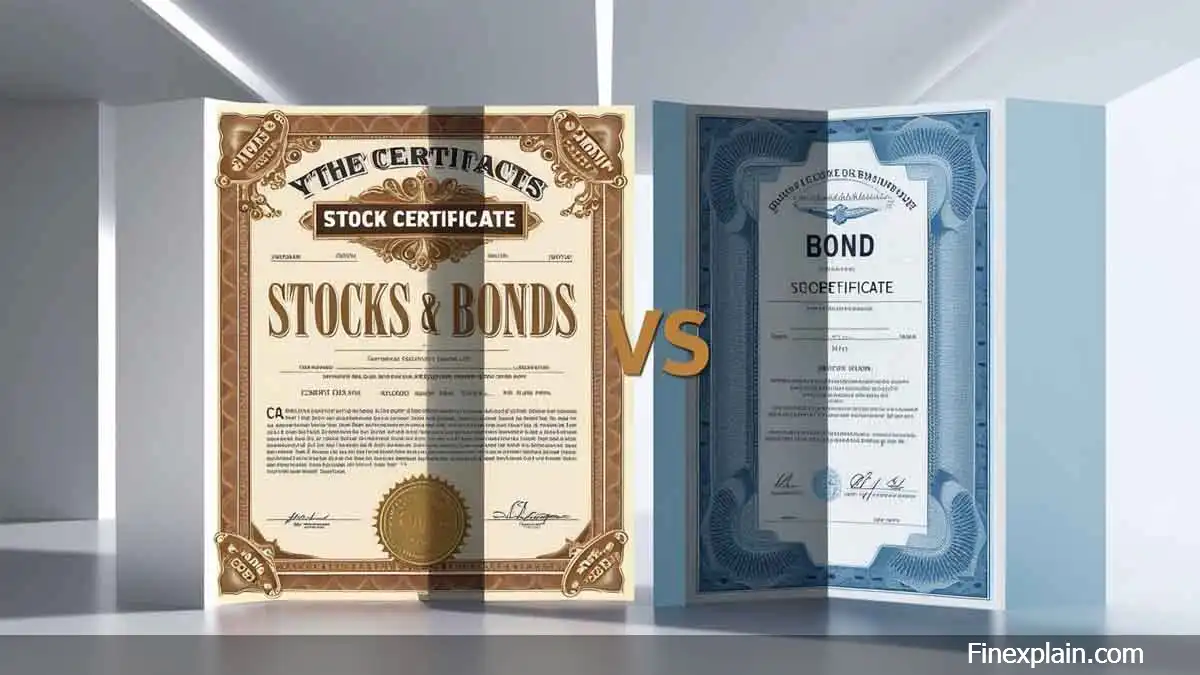Understanding the difference between stocks and bonds is essential for anyone interested in investing. These two financial instruments offer different ways to grow or protect your money, each with its own risk and reward profile. In this article, we’ll break down the key differences, explain how they work, and help you decide which one might be right for your investment goals.
What Are Stocks?
Stocks, also known as shares or equities, represent ownership in a company. When you buy a stock, you become a partial owner of the company and may benefit from its success.
- Ownership: You own a piece of the company (e.g., Apple, Microsoft, Tesla).
- Dividends: Some companies pay part of their profits to shareholders.
- Capital Gains: You can earn money if the stock price increases.
- Voting Rights: Common shareholders can vote on major company decisions.
For example, if you buy shares of Apple Inc. (AAPL), you benefit when Apple performs well in the market.
What Are Bonds?
Bonds are debt instruments issued by corporations or governments to raise capital. When you buy a bond, you are effectively lending money to the issuer in exchange for regular interest payments and the return of your principal at maturity.
- Fixed Income: Bonds pay interest (also called a coupon) regularly.
- Lower Risk: Generally considered safer than stocks.
- No Ownership: Bondholders are creditors, not owners.
- Maturity Date: The bond is repaid at the end of a fixed term.
For example, you can invest in U.S. Treasury Bonds or corporate bonds issued by companies like Coca-Cola or IBM.
Stocks vs. Bonds: Key Differences
| Criteria | Stocks | Bonds |
|---|---|---|
| Type of Investment | Ownership in a company | Loan to a company or government |
| Returns | Dividends + stock price increase | Fixed interest (coupon) |
| Risk Level | Higher | Lower |
| Priority in Bankruptcy | Paid last (or not at all) | Paid before shareholders |
| Voting Rights | Yes (common shares) | No |
| Examples | Apple, Amazon, Google stocks | U.S. Treasury, corporate bonds (e.g., IBM) |
Which One Should You Choose?
The choice between stocks and bonds depends on your financial goals, risk tolerance, and investment horizon. Here are some general guidelines:
- Choose stocks if:
- You seek higher returns over the long term.
- You are comfortable with market ups and downs.
- You are investing for growth (e.g., retirement in 20+ years).
- Choose bonds if:
- You prefer stability and predictable income.
- You’re close to retirement and want to preserve capital.
- You want to balance risk in your portfolio.
Real-World Example
Let’s say you have $10,000 to invest:
- If you invest in Tesla stock, your money could grow significantly — or drop — depending on the market and company performance.
- If you buy a 10-year bond from Johnson & Johnson with a 4% coupon, you receive $400 per year in interest and get your $10,000 back after 10 years (assuming no default).
Common Misconceptions
- “Bonds are 100% safe”: Corporate bonds can default, and bond prices can fall if interest rates rise.
- “Stocks always go up”: Markets fluctuate, and companies can underperform.
- “You get rich quickly with stocks”: Investing takes time and patience.
Conclusion
Stocks and bonds serve different purposes in your portfolio. Stocks offer ownership and the potential for high returns but come with higher risk. Bonds provide steady income and lower volatility but typically offer smaller returns. For most investors, a mix of both can help balance growth and safety.
Tip: Start small, diversify your investments, and consider speaking with a financial advisor if you're unsure.
Share this article:





